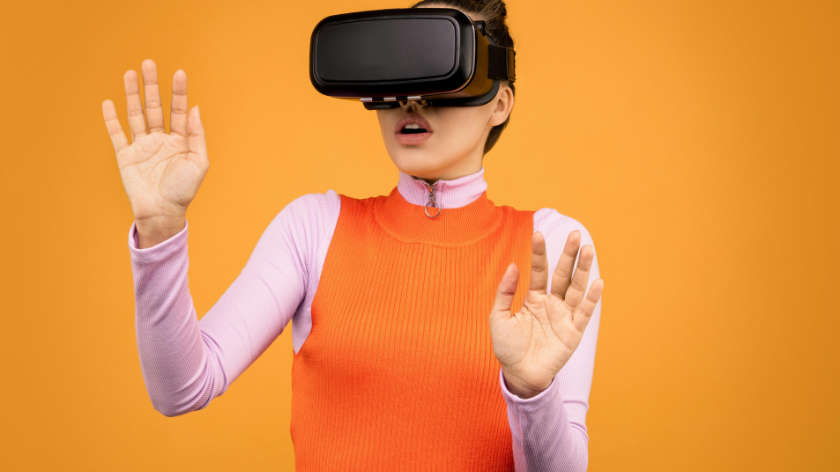
Virtual reality (VR) is no longer just a buzzword, but a significant part of industries ranging from gaming to healthcare. This is confirmed by recent stats about this new technology, which estimate that, by 2027, the VR market is projected to hit $57.55 billion, driven by its expanding use in entertainment, education, and training.
This technology already provides immersive experiences, transporting users into virtual worlds that mimic real life or create entirely new realities, but its progress is very fast and its possible applications will be increasingly comprehensive and important.
Growth drivers in the VR market
The rapid adoption of VR is fueled by continuous advancements in both hardware and software.
The combination of advanced headsets, interactive environments and sensory feedback is revolutionizing how we engage with digital content; that’s why so many people are more and more curious to try these new digital experiences.
Head-mounted displays (HMDs) like the Oculus Quest and HTC Vive have become, in recent years, more affordable, making immersive experiences accessible to a broader audience.
The rise in demand for remote solutions in education, healthcare and corporate training has also accelerated VR adoption.
Gaming remains the largest segment, however, with the increasingly frequent use of these systems to allow players to access gaming platforms like the virtual online casino, and experience the thrill of being in a real digital room with roulette tables, slot machines and many other traditional entertainments.
In the meanwhile, sectors like automotive, manufacturing and even tourism are increasingly embracing VR for simulation and training purposes, with excellent results in terms of participation and involvement.
Global trends and regional insights
The global VR landscape is diverse, with distinct regional growth patterns. North America, home to tech giants like Facebook and Google, leads the market thanks to strong demand in gaming and entertainment, while Europe comes right after, especially with its growing focus on education and healthcare applications.
On the other side of the world, Asia Pacific - particularly China - is set to witness significant growth due to substantial investments in the technology and a burgeoning startup ecosystem.
Finally, in emerging markets such as Latin America and the Middle East, VR is gaining traction, especially in entertainment and education.
Brazil and Mexico, for instance, are seeing an increase in VR content creation, while the UAE is exploring new opportunities in educational and healthcare initiatives.
Challenges facing VR adoption
Despite its potential, VR faces hurdles that could slow down its widespread adoption.
One of the biggest barriers remains the cost of high-quality hardware; furthermore, content availability is limited, with businesses reporting that a lack of engaging applications is holding back wider use.
Moreover, issues like motion sickness continue to affect users, with more than half of VR users having experienced it at least once, posing another challenge to the technology’s adoption.
It should be noted, however, that improvements have been rapid and significant in the space of a few years, which opens up interesting scenarios from the point of view of the mass diffusion of VR technologies.
VR's impact on industries
The potential applications of VR are vast. Beyond gaming, where the market is expected to reach $92.31 billion by 2027, VR is set to transform industries like healthcare, education and even manufacturing.
In healthcare, for instance, VR is already being used for surgical simulations, patient therapy and training.
In education, instead, immersive environments help students engage more deeply with course material, offering simulations of historical events, laboratory experiments, or architectural tours.
According to ThinkMobiles, even if only 23% of schools have introduced virtual reality, the majority of students can't wait to try it to enhance their courses (68%) and simulate real experiences (72%).
Manufacturing and automotive sectors are also early adopters, using VR for prototyping and training and allowing for detailed visualizations of products in development, reducing the need for physical prototypes and speeding up the production process.
For tourism, VR offers consumers virtual tours of destinations before booking a trip, enhancing the decision-making process.
The data demonstrate, in short, that virtual reality is increasingly ready to enter our lives, involving us in new experiences both professional and recreational.
This important change must push us to invest in this direction in order not to lose the opportunity to fully exploit a technology with a thousand potentials.















